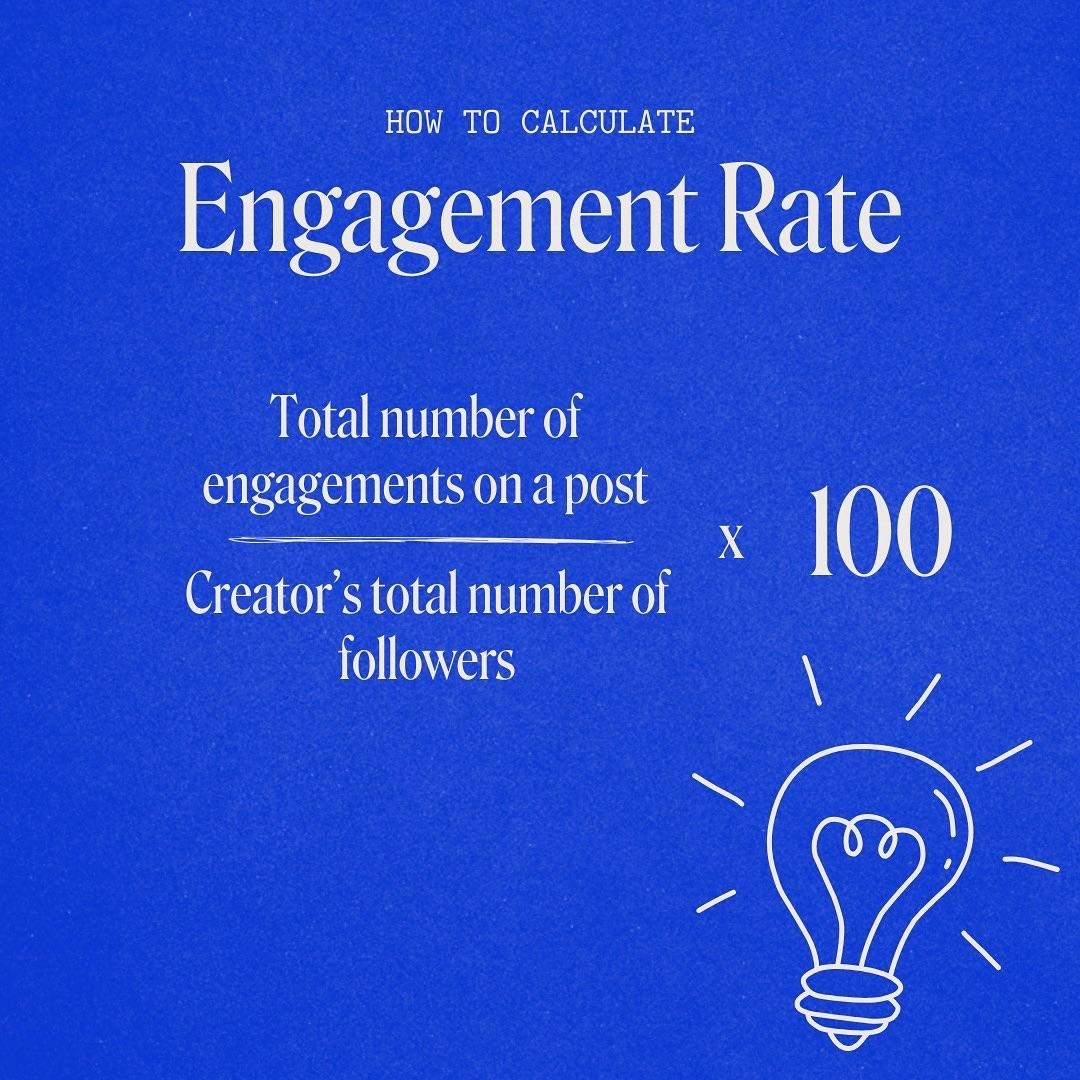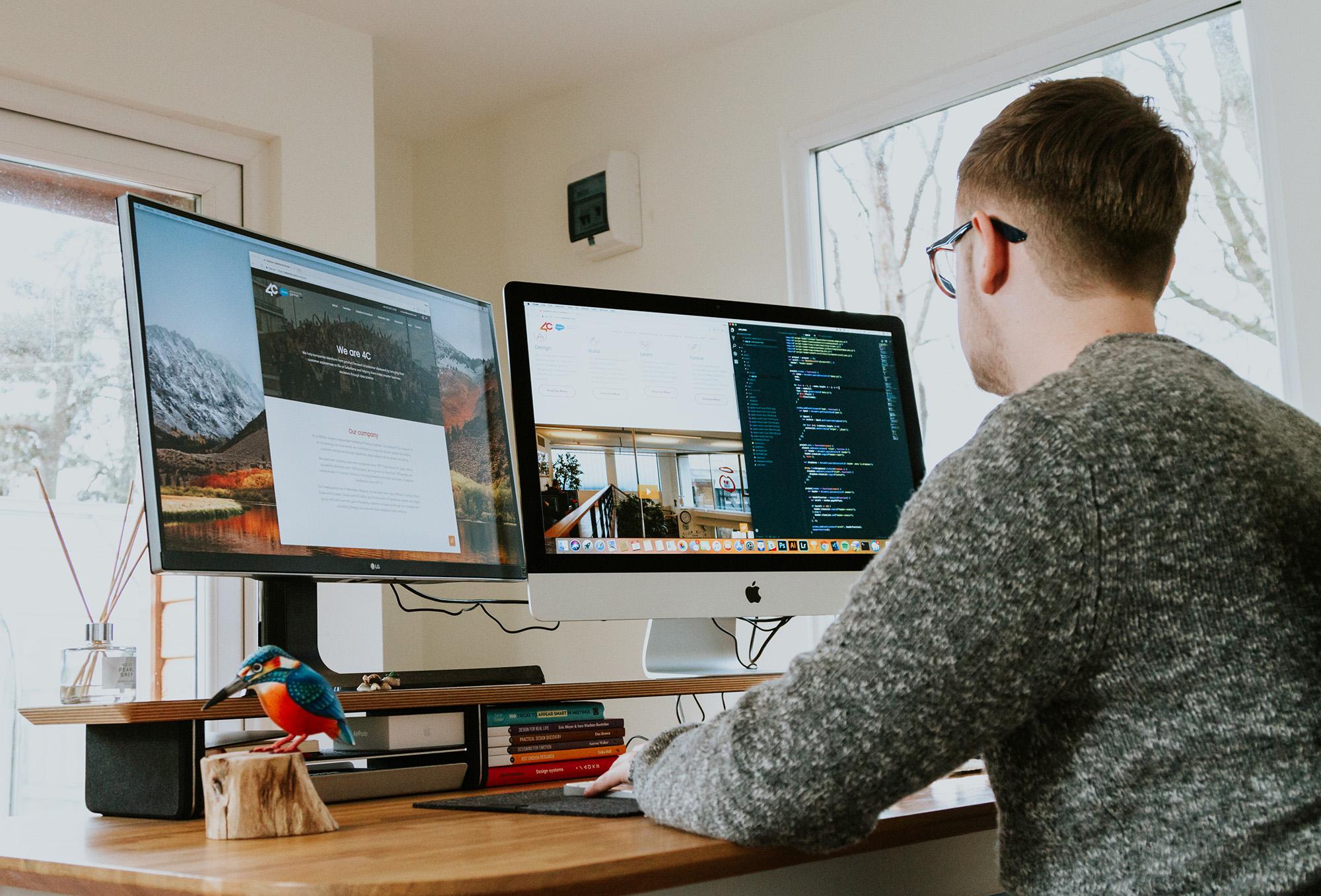
How to Become a Web Designer With No Degree: A 5-Step Guide
Have you ever looked at a stunning website and thought, “I wish I could create something like that”? Well, guess what? You can! The world of web design is more accessible than ever, and you don’t need a fancy degree to dive in. Whether you’re looking to switch careers, start a side hustle, or simply explore a new passion, becoming a web designer is an achievable goal—no formal education required. In this article, we’ll walk you through a simple, five-step guide to kickstart your journey into web design. So grab your favorite beverage, get comfortable, and let’s turn that dream into reality!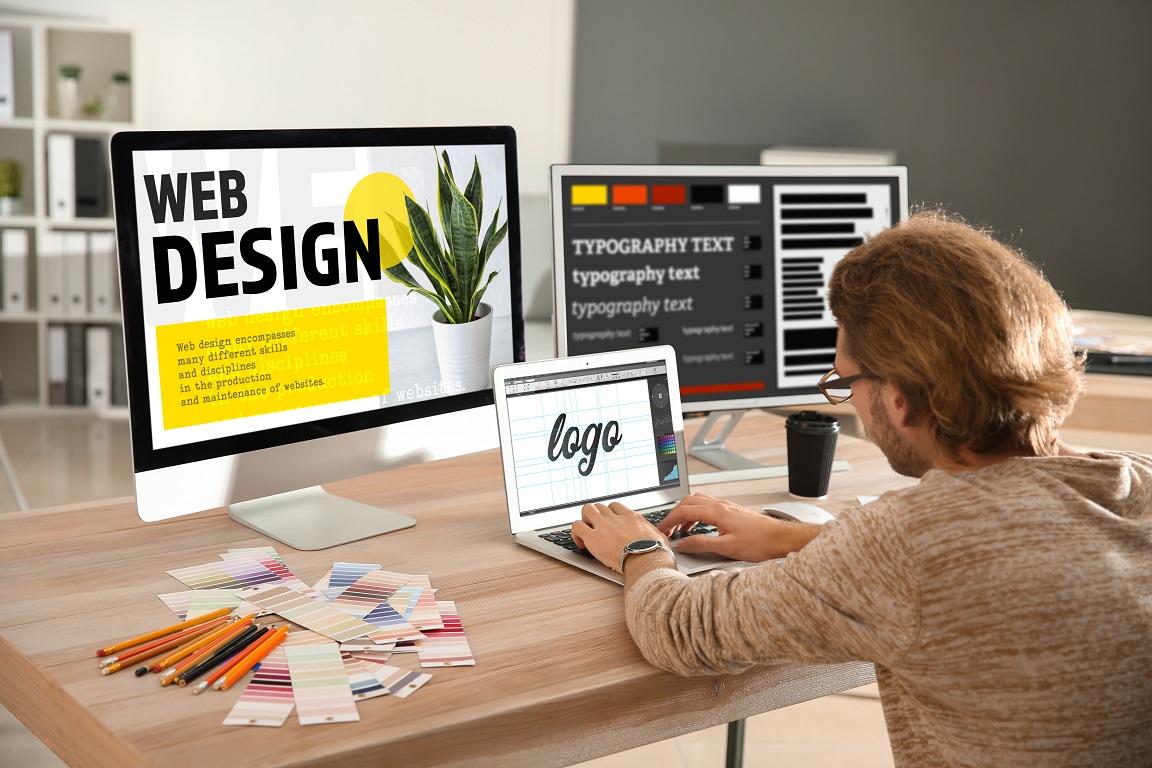
Understanding the Role of a Web Designer
Web designers play a crucial role in the digital landscape, shaping the way users interact with websites and applications. Their primary responsibility is to create visually appealing, user-friendly interfaces that enhance the overall user experience. But what exactly does this entail? Let’s break it down.
A web designer typically wears many hats, balancing aesthetic elements with functionality. They need to have a strong grasp of design principles, including:
- Color theory: Understanding how colors affect user emotions and behavior.
- Typography: Choosing the right fonts to ensure readability and brand consistency.
- Layout design: Structuring content in a way that guides users through the site intuitively.
In addition to these design elements, a web designer must also consider technical aspects. Familiarity with HTML, CSS, and even JavaScript is essential, as these languages are the backbone of web development. While a deep dive into coding isn’t necessary for all designers, basic knowledge can significantly enhance a designer’s ability to collaborate with developers and communicate ideas effectively.
| Skill | Description |
|---|---|
| Responsive Design | Ensures websites look great on all devices, from desktops to smartphones. |
| User Experience (UX) | Focuses on optimizing user satisfaction by improving usability and accessibility. |
| Graphic Design | Creates visual content that communicates the brand’s message effectively. |
Moreover, a successful web designer must stay updated with the latest design trends and technologies. The digital world evolves rapidly, and keeping abreast of new tools and methodologies is vital. This means exploring:
- Design software: Mastery of tools like Adobe XD, Figma, and Sketch can set you apart.
- Web accessibility: Understanding how to make websites usable for people with disabilities.
- SEO basics: Knowing how design choices can impact search engine rankings.
Collaboration is another key aspect of a web designer’s role. Working closely with clients, developers, and other stakeholders is crucial for bringing a vision to life. Effective communication ensures that everyone is aligned on the project goals and that the final product meets or exceeds expectations.
Ultimately, a web designer’s role is to bridge the gap between creativity and technology. By understanding user needs and leveraging design principles alongside technical knowledge, they create engaging websites that not only look good but also function seamlessly. Embracing this multifaceted approach is essential for anyone looking to thrive in this exciting field.
The Essential Skills You Need to Succeed
Embarking on a journey to become a web designer without a formal degree may seem daunting, but the right skills can set you on a path to success. Here are the essential skills that every aspiring web designer should develop to thrive in this dynamic field:
- HTML & CSS: These are the building blocks of web design. Understanding HTML allows you to create the structure of a web page, while CSS brings it to life with style. Mastering these languages will enable you to develop responsive and visually appealing websites.
- Design Principles: Familiarize yourself with basic design principles such as balance, contrast, alignment, and typography. This knowledge will help you create aesthetically pleasing layouts that enhance the user experience.
- Responsive Design: With the rise of mobile browsing, knowing how to design websites that look good on all devices is crucial. This involves understanding flexible grids, fluid images, and media queries.
- User Experience (UX) Design: Learn to empathize with users by understanding their needs and behaviors. This skill will allow you to create intuitive interfaces that keep users engaged and satisfied.
- Basic JavaScript: While not mandatory, having a grasp of JavaScript can significantly enhance your web design capabilities. It allows for interactive elements that can make your sites more engaging.
- Graphic Design Tools: Familiarize yourself with tools like Adobe Photoshop, Illustrator, or Sketch. Being able to create or modify graphics can set your work apart and save you time and resources.
- SEO Basics: Understanding the fundamentals of Search Engine Optimization (SEO) will help ensure that your designs are not only beautiful but also visible to search engines, attracting more visitors to your site.
- Communication Skills: As a web designer, you’ll often work with clients or teams. Being able to clearly articulate your ideas and understand project requirements is key to delivering successful designs.
| Skill | Why It’s Important |
|---|---|
| HTML & CSS | Foundation of web design. |
| Design Principles | Creates visually appealing layouts. |
| Responsive Design | Essential for mobile users. |
| UX Design | Enhances user satisfaction. |
| Basic JavaScript | Enables interactive features. |
| Graphic Design Tools | Facilitates graphic creation/modification. |
| SEO Basics | Improves website visibility. |
| Communication Skills | Key for effective collaboration. |
By nurturing these skills, you’ll not only enhance your web design capabilities but also position yourself as a competitive candidate in this ever-evolving industry. Remember, the journey of learning is just as important as the destination. Invest time in practice, seek feedback, and never stop exploring new trends and technologies!
Finding Your Learning Style: Self-Taught vs. Online Courses
When embarking on your journey to become a web designer without a traditional degree, one of the first questions you might ask yourself is how you learn best. Understanding your learning style is crucial because it can significantly impact your effectiveness and motivation as you acquire new skills. There are two primary paths to consider: self-taught methods and online courses, each offering distinct advantages and challenges.
Self-taught learning empowers you to be in control of your education. You can choose resources that resonate with you, whether it’s articles, tutorials, videos, or coding challenges. Here are some benefits of this approach:
- Flexibility: Learn at your own pace and on your own schedule.
- Cost-effective: Access a wealth of free resources, reducing the financial burden.
- Customization: Tailor your learning experience to suit your personal interests and goals.
On the flip side, it requires a high level of self-discipline and motivation. Without a structured curriculum, you may find yourself overwhelmed by the sheer volume of information available. This approach also lacks the guidance and feedback that can be invaluable in mastering complex topics.
Online courses provide a more structured framework for learning, which can be beneficial if you thrive in a guided environment. Many platforms offer comprehensive courses specifically designed for aspiring web designers. Consider these perks:
- Structured Learning: Follow a clear path from beginner to advanced topics.
- Expert Guidance: Learn from industry professionals and receive valuable feedback.
- Community Support: Join forums or discussion groups that can enhance the learning experience.
However, online courses often come with a price tag, which can be a barrier for some. Additionally, while they offer a structured approach, they may not provide the same level of flexibility that self-taught methods do.
| Learning Style | Pros | Cons |
|---|---|---|
| Self-Taught |
|
|
| Online Courses |
|
|
Ultimately, the choice between self-taught learning and online courses depends on your personal preferences and circumstances. You might even find a hybrid approach works best for you—using free resources to supplement your courses or diving deep into self-taught projects after completing an online class. The key is to remain adaptable and open to experimentation as you discover what learning style ignites your passion for web design.

Building a Strong Foundation with Basic Web Technologies
To embark on your journey into web design, it’s essential to grasp the fundamental technologies that power the web. These basic web technologies form the backbone of any successful website, making it imperative for aspiring designers to get comfortable with them. Start by familiarizing yourself with HTML, CSS, and JavaScript—each plays a critical role in crafting engaging and functional web pages.
HTML (HyperText Markup Language) is the skeleton of your webpage. It structures content and defines elements like headings, paragraphs, links, and images. Mastering HTML will enable you to create a clean and organized layout, ensuring that your content is accessible and easy to navigate.
Next, dive into CSS (Cascading Style Sheets). While HTML gives your site structure, CSS adds style and flair. This technology allows you to manipulate colors, fonts, and layouts to create visually appealing designs. By understanding CSS, you’ll have the power to transform a plain webpage into a stunning visual masterpiece that captures user attention.
Last but not least, familiarize yourself with JavaScript. This powerful scripting language adds interactivity to your designs. Whether it’s creating a responsive navigation menu or enabling dynamic content updates, JavaScript can significantly enhance the user experience. Even basic knowledge can set you apart from others in the field.
Start by working on small projects or contributing to open-source initiatives. This hands-on experience will solidify your understanding of these technologies and allow you to build a portfolio that showcases your skills. Consider the following strategies to enhance your learning:
- Join online coding communities and forums to ask questions and share knowledge.
- Follow tutorials and online courses that focus on HTML, CSS, and JavaScript.
- Create personal or practice projects that allow you to apply what you’ve learned.
- Experiment with different styles and layouts to hone your design sense.
While mastering these technologies, it’s also valuable to stay up-to-date with the latest trends and tools in web design. Here’s a quick reference table of some essential tools and resources that can aid your learning journey:
| Tool/Resource | Purpose |
|---|---|
| Codecademy | Interactive coding lessons for beginners |
| W3Schools | Comprehensive reference and tutorials for web technologies |
| Figma | Design and prototype user interfaces |
| GitHub | Collaborate on projects and showcase your work |
By laying this strong foundation with basic web technologies, you’ll not only enhance your skillset but also boost your confidence as you transition into more complex areas of web design. Each step taken will bring you closer to becoming a competent web designer, capable of bringing your creative visions to life.
Creating Your First Projects: A Step-by-Step Approach
Starting your journey as a web designer can feel overwhelming, especially without formal education. However, creating your first projects is a fantastic way to gain hands-on experience and build a portfolio that showcases your skills. Here’s a simple step-by-step approach to get you started.
Choose Your First Project
Begin by selecting a project that excites you. It could be a personal website, a blog, or a portfolio site to display your work. Here are a few ideas:
- Personal Portfolio: Showcase your skills and interests.
- Blog: Write about your journey in web design and share tips.
- Redesign a Popular Site: Take an existing website and give it a fresh look.
- Non-Profit Site: Offer your skills to a local charity or community group.
Plan Your Project
Once you’ve chosen your project, outline your goals. Consider what you want to achieve and how you plan to execute it. A project plan can include:
- Target audience
- Key features
- Design style and color palette
- Content outline
Design and Develop
Now comes the fun part—designing and developing your project! Use tools like Figma or Adobe XD for wireframing, and start coding with HTML, CSS, and JavaScript. Here’s a basic structure you can follow:
| Section | Purpose |
|---|---|
| Header | Introduce the site and provide navigation. |
| Main Content | Engage visitors with your work and ideas. |
| Footer | Include contact info and links to social media. |
Test and Refine
After developing your project, it’s crucial to test it. Check for functionality on different devices and browsers. Get feedback from friends or fellow designers. Consider these aspects:
- Loading speed
- Responsive design
- User experience
Launch and Share
Once you’re satisfied with your project, it’s time to launch! Publish your site using platforms like GitHub Pages, Netlify, or your own hosting solution. Share your work on social media, web design communities, or forums to gain visibility and connect with others in the field.
Each project you create will enhance your skills and confidence. So take that leap and start designing! The web design world is waiting for your unique touch.

Curating an Impressive Portfolio to Attract Clients
Creating a portfolio that stands out is crucial for attracting clients in the competitive world of web design. Your portfolio is often the first impression potential clients will have of your skills and creativity. To make it impressive, consider these essential elements:
- Diverse Projects: Showcase a variety of work that highlights your versatility. Include personal projects, mock-ups, or volunteer work to demonstrate different styles and functionalities.
- Case Studies: Go beyond just displaying finished products. Include case studies that explain your design process, the challenges faced, and how your solutions met client needs.
- User-Centric Design: Emphasize how your designs enhance user experience. Provide examples that demonstrate your understanding of accessibility and usability principles.
- High-Quality Visuals: Invest time in ensuring that your portfolio is visually appealing. Use high-resolution images and maintain a clean layout that reflects your design aesthetics.
- Responsive Design Samples: Given the prevalence of mobile browsing, ensure your portfolio showcases responsive designs. Highlight how your designs adapt to various screen sizes.
Another key aspect to consider is the presentation of your portfolio. A well-organized and easy-to-navigate portfolio is as vital as the work itself. Here’s how you can structure it effectively:
| Section | Description |
|---|---|
| Home Page | Introduce yourself briefly and showcase your best work prominently. |
| About Me | Share your journey, design philosophy, and any relevant skills. |
| Portfolio | Display your projects with images, descriptions, and links to live sites if possible. |
| Testimonials | Include quotes from clients or colleagues that speak to your abilities and work ethic. |
| Contact Information | Make it simple for potential clients to reach you with clear and accessible contact details. |
Lastly, regularly update your portfolio. As you grow and evolve as a designer, your portfolio should reflect your latest skills and projects. This not only keeps your work fresh but also demonstrates to clients that you are continuously learning and improving.
curating an impressive portfolio is not just about showcasing your work; it’s about telling your story as a designer. By following these guidelines and focusing on quality, diversity, and clarity, you’ll be well on your way to attracting clients who appreciate your talent and unique perspective.
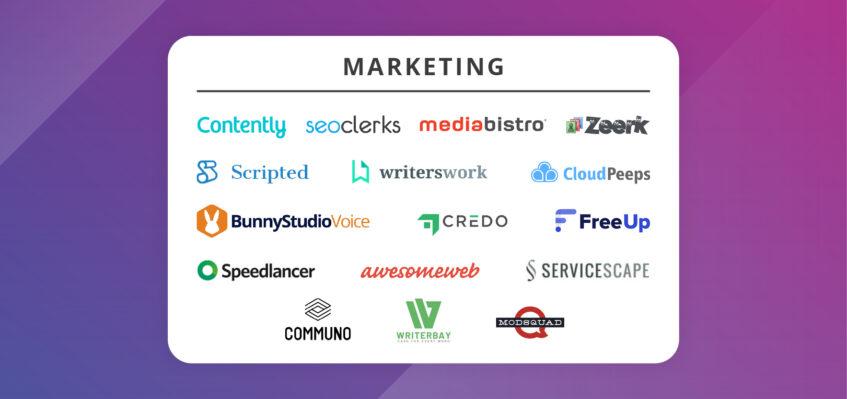
Navigating Freelance Platforms to Find Your First Job
Finding your first job as a web designer can feel daunting, especially if you’re starting without a degree. Freelance platforms offer a fantastic way to showcase your skills, gain experience, and build a portfolio. Here’s how to navigate these platforms effectively:
- Choose the Right Platform: Start by exploring popular freelance websites like Upwork, Fiverr, and Freelancer. Each platform has its unique audience and job offerings. Research to find the one that aligns with your skills and the type of projects you’re interested in.
- Create a Compelling Profile: Your profile is your first impression, so make it count! Include a professional photo, a concise bio highlighting your web design skills, and any relevant experience. Don’t forget to showcase your work through a portfolio—this can set you apart from others.
- Start Small: Initially, it might be beneficial to take on smaller projects. These jobs often have less competition and can help you build your confidence while gaining valuable testimonials and reviews.
- Bid Wisely: When applying for jobs, tailor your proposals to each client. Mention how you can solve their specific problems, and keep your bids competitive but fair. Highlight your unique skills and any relevant experience that makes you the right choice for the project.
Another vital aspect is networking. Engage with other freelancers and clients on these platforms to build relationships. Here are a few ways to network effectively:
- Participate in Community Discussions: Many platforms have forums or community boards. Join discussions, offer help, and ask questions to establish your presence.
- Follow Up with Clients: After completing a project, maintain a good relationship with your clients. Send a thank-you message and check in occasionally; they may consider you for future work or refer you to others.
- Request Feedback: Feedback is crucial in building your reputation. Don’t hesitate to ask clients for reviews once you’ve successfully completed a project. Positive reviews improve your visibility and credibility on the platform.
keep honing your skills. Technology evolves rapidly, and staying updated on design trends and software will make you a more attractive candidate. Consider taking online courses or participating in webinars to enhance your knowledge and offerings.
With determination and the right strategies, navigating freelance platforms can lead you to your first web design job and set the stage for a successful freelance career.

Networking and Building Relationships in the Design Community
Networking within the design community is essential for anyone looking to break into web design, especially without a formal degree. Building relationships with fellow designers, developers, and industry professionals can open up opportunities, provide guidance, and create a supportive environment as you navigate your new career. Here are some effective strategies to cultivate your network:
- Attend Local Meetups and Conferences: Check out design meetups or conferences in your area. These events are perfect for meeting industry professionals and like-minded individuals. Don’t hesitate to engage in conversations and exchange contact information.
- Join Online Communities: Platforms like Dribbble, Behance, or specialized design forums are excellent places to connect with other designers. Participate in discussions, share your work, and provide feedback to others to build rapport.
- Utilize Social Media: Leverage platforms like LinkedIn, Twitter, and Instagram to follow and interact with design influencers. Comment on their posts, share articles, and contribute your insights to create visibility in the community.
- Collaborate on Projects: Look for opportunities to work on collaborative projects with other designers or developers. Joint ventures not only enhance your skills but also expand your network organically.
Another effective way to build relationships in the design community is by finding a mentor. A mentor can offer invaluable insights and feedback on your work, guide you through challenges, and introduce you to their network. Here are some tips on how to find a mentor:
- Identify Potential Mentors: Look for individuals whose work you admire and who are established in the industry. This could be someone from a conference you attended or an active participant in online communities.
- Reach Out Professionally: When you contact a potential mentor, be sure to articulate why you admire their work and how you believe they could help you grow as a designer. A personalized message goes a long way.
- Be Open to Feedback: Understand that mentorship is a two-way street. Be receptive to constructive criticism and advice, and show your commitment to learning and improving.
Building relationships within the design community is not just about personal gains; it’s also about giving back. Engaging with others, sharing knowledge, and supporting fellow designers in their journeys can lead to a more robust and vibrant community. Consider:
- Creating Resources: Develop tutorials or write articles that can help others in their design journey. Sharing your knowledge establishes you as a valuable member of the community.
- Participating in Design Challenges: Join design challenges or competitions. Not only do these events enhance your skills, but they also allow you to meet other participants and judges who could become part of your network.
- Volunteering: Offer your design skills to non-profits or community organizations. This not only strengthens your portfolio but also connects you with people who share your values.
By actively participating in the design community and fostering genuine relationships, you can pave your way into the web design industry without a formal degree. The connections you build and the knowledge you share will be invaluable assets as you progress in your career.

Staying Updated: The Importance of Continuous Learning
In the fast-paced world of web design, new trends, tools, and technologies are constantly emerging. As a budding designer, embracing continuous learning is vital for staying relevant and competitive in the field. Here’s why keeping your skills sharp should be at the forefront of your career development.
First and foremost, the digital landscape is ever-evolving. What was popular yesterday may not hold the same weight tomorrow. By dedicating time to learn new skills and techniques, you ensure that your designs are not only modern but also appealing to users. Staying updated enables you to integrate the latest design trends, resulting in websites that are visually stunning and user-friendly.
Moreover, continuous learning enhances your portfolio. As you acquire new skills, you gain the ability to tackle a wider variety of projects. This diversification can significantly improve your portfolio, showcasing your versatility as a designer. Potential clients and employers are often looking for individuals who can adapt and innovate, making a strong portfolio a crucial asset in landing new opportunities.
Another critical aspect is networking with other professionals. Engaging in workshops, webinars, or online courses opens up avenues to connect with fellow designers and industry experts. These interactions can lead to mentorships, collaborations, and valuable insights into best practices. The more you learn, the more conversations you can engage in, broadening your professional network.
Additionally, the tech aspect of web design requires constant updates. With programming languages and design software frequently updated, knowing how to navigate these changes is essential. For example, becoming proficient in new tools like Figma, Sketch, or Webflow can dramatically enhance your workflow and creativity. Staying updated allows you to leverage these tools effectively, improving both your efficiency and the quality of your work.
Here’s a quick table summarizing the benefits of continuous learning for web designers:
| Benefit | Description |
|---|---|
| Staying Current | Keep up with industry trends and technologies. |
| Portfolio Growth | Diversify your work to attract more clients. |
| Networking Opportunities | Connect with peers for collaboration and mentorship. |
| Tool Proficiency | Master new design tools to enhance productivity. |
self-improvement fuels creativity. Learning new skills or exploring different design philosophies can inspire fresh ideas and innovative approaches. When you challenge yourself to step outside your comfort zone, the result is often groundbreaking work that sets you apart from others in the field.
committing to continuous learning is not just an option; it’s a necessity for anyone aspiring to thrive as a web designer. By staying updated, you equip yourself with the knowledge and skills to not only survive but thrive in this dynamic industry.

Leveraging Social Media to Showcase Your Work
In today’s digital age, showcasing your work as a web designer has never been easier, thanks to social media platforms. These channels not only allow you to reach a larger audience but also help you connect with potential clients and collaborators. Here are some effective strategies to leverage social media for showcasing your web design skills:
- Choose the Right Platforms: Not all social media sites are created equal for web designers. Focus on platforms like Instagram, Behance, and Dribbble, where visual content reigns supreme. LinkedIn is also a great place to network with professionals.
- Create a Consistent Brand: Your social media profiles should reflect your unique style and skills. Use a consistent color scheme, logo, and bio across all platforms to establish a recognizable brand identity.
- Post Regularly: Consistency is key. Develop a content calendar that includes a mix of project showcases, behind-the-scenes content, and design tips. This keeps your audience engaged and showcases your expertise over time.
- Engage with Your Audience: Don’t just post your work; interact with your followers. Respond to comments, ask for feedback, and participate in conversations. Building a community around your work can lead to valuable connections.
Utilizing visuals effectively can significantly enhance your online presence. High-quality images of your projects are a must. Consider the following tips:
- Show Before and After: Demonstrating the transformation of a project can be incredibly compelling. Use side-by-side images or sliders to highlight your impact.
- Use Stories and Reels: Take advantage of features like Instagram Stories or TikTok videos to share quick tips, project updates, or design processes in a more engaging format.
- Leverage User-Generated Content: Encourage your clients to share their experiences with your designs. Reposting their content not only provides social proof but also strengthens your relationship with them.
To keep your social media presence organized and effective, consider creating a simple content calendar. Below is a basic example:
| Day | Content Type | Platform |
|---|---|---|
| Monday | Project Showcase | |
| Wednesday | Design Tip | |
| Friday | Behind-the-Scenes | Stories (Instagram) |
Lastly, don’t forget to utilize hashtags strategically. Research popular and relevant hashtags in the web design community to increase the visibility of your posts. Pair them with location tags to connect with local clients, or industry-specific tags to attract the right audience.

Overcoming Challenges as a Self-Taught Designer
Embarking on a journey as a self-taught designer is both exciting and daunting. One of the most significant hurdles you’ll encounter is the lack of formal training. Without a degree, you might feel unqualified, but remember that many successful designers have paved their way through similar paths. The key is to embrace the challenge and use it as a springboard for your creativity and determination.
First and foremost, finding reliable resources is crucial. With so much information available online, discerning quality from noise can be tricky. Look for reputable websites, online courses, and design communities that can provide insight and feedback. Here are a few resources to consider:
- Online Courses: Platforms like Udemy or Coursera offer affordable courses.
- Design Communities: Join forums like Dribbble or Behance for inspiration and critiques.
- YouTube Channels: Many designers share invaluable tutorials and tips for free.
Another challenge is building a portfolio without prior experience. Start by working on personal projects or redesigning existing websites. Create mock-ups that showcase your style and skills. Even if they are fictitious, they can demonstrate your ability to potential clients or employers. Remember, a portfolio is a living document—it will evolve as you grow and learn.
It’s also essential to develop a support network. Surround yourself with other creatives who understand your journey. Consider joining local meetups or online groups where you can exchange ideas, seek advice, and find encouragement. Engaging with others can help you stay motivated and inspired, especially when you hit roadblocks.
Don’t shy away from constructive criticism. Feedback can feel intimidating, but it’s invaluable for growth. Share your work with peers or mentors and ask for their honest opinions. Accepting and applying feedback can significantly improve your design skills and help you view your work from different perspectives.
Lastly, remember the power of persistence. The path of a self-taught designer is rarely linear. You will encounter failures and frustrations along the way, but each setback presents an opportunity to learn and grow. Stay committed to your craft, practice consistently, and celebrate your progress, no matter how small. It’s your unique journey that will set you apart in the world of web design.
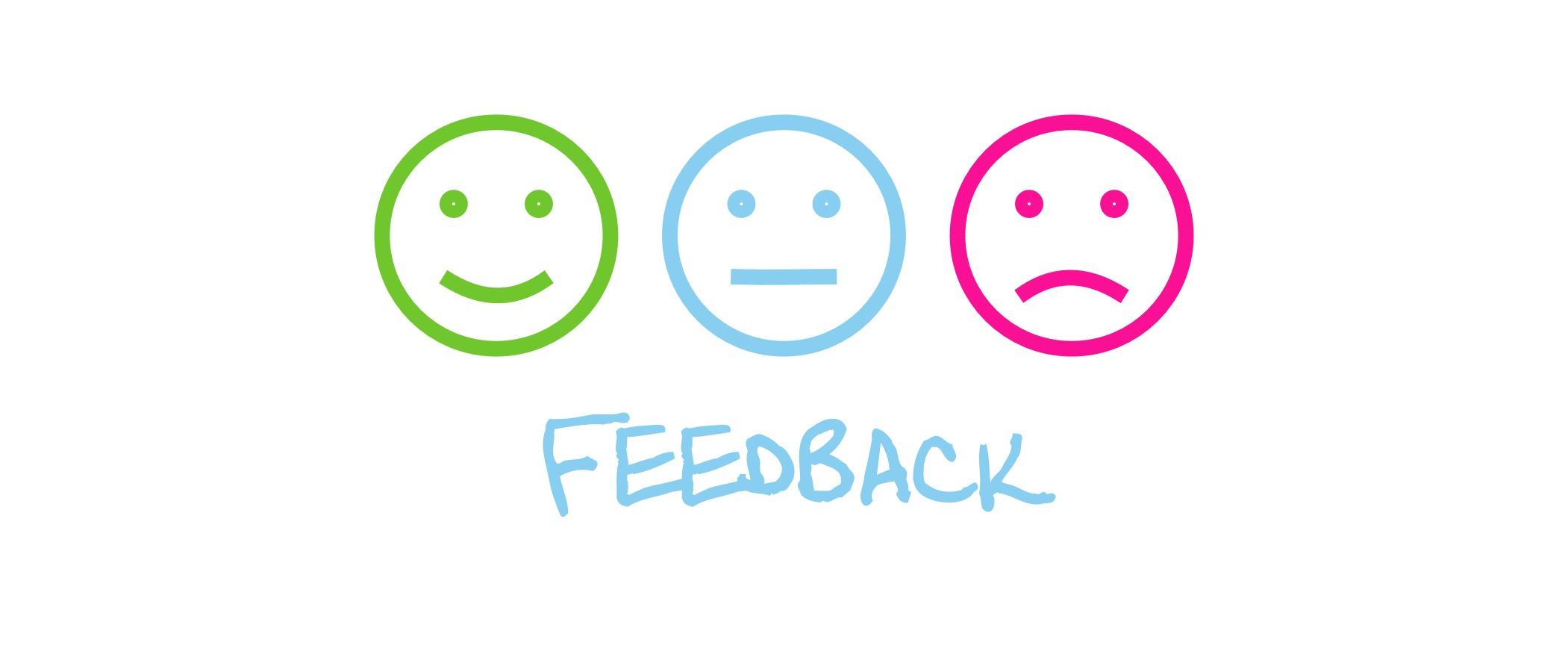
The Power of Feedback: Learning from Critiques
Feedback is a vital part of growth, especially in the ever-evolving field of web design. Embracing critiques can seem daunting, but when approached with an open mind, they can serve as powerful tools for improvement. Each piece of feedback you receive is an opportunity to refine your skills and enhance your creativity.
One of the first steps to effectively utilizing feedback is to actively seek it out. Don’t wait for others to offer their opinions; instead, engage with fellow designers, mentors, or even potential users of your designs. Present your work and ask specific questions about areas you feel uncertain about. This proactive approach not only demonstrates your commitment to growth but also helps you gather insights that are directly relevant to your development.
When feedback arrives, it’s essential to approach it with a constructive mindset. Instead of viewing critiques as personal attacks, consider them as valuable perspectives that can illuminate blind spots. Focus on the content of the feedback rather than the delivery. It’s often helpful to break down the critiques into manageable sections—positive notes, suggestions for improvement, and areas that may require further clarification.
Here’s a simple table to categorize feedback based on its nature:
| Type of Feedback | Example |
|---|---|
| Positive | “The color palette is vibrant and engaging!” |
| Constructive | “Consider simplifying the navigation for better user experience.” |
| Clarification Needed | “I’m not sure the layout is intuitive; can you explain your thought process?” |
After categorizing the feedback, take time to reflect on it. Ask yourself questions like: What patterns do I notice? Are there common themes in the critiques? What actionable steps can I take to address these points? This reflection will help you prioritize which feedback to implement first and ensure that your improvements are both strategic and meaningful.
Remember, not all feedback will resonate with you, and that’s perfectly okay. It’s crucial to develop your own voice and style as a designer. Use feedback as a guide, but don’t feel obligated to follow every suggestion. Trust your instincts and integrate the critiques that align with your vision for your work.
Lastly, incorporate what you learn into your future projects. As you apply the insights gained from critiques, you’ll notice your skills growing stronger and your designs becoming more refined. Document your journey; keeping a record of feedback and your responses can serve as a great resource for future reference and reflection. Growth is a process, and with each critique, you’re one step closer to becoming the designer you aspire to be.

Turning Passion into Profit: Strategies for Success
Are you ready to transform your love for design into a thriving career? Many people believe that a formal degree is the only path to becoming a web designer, but that’s simply not true. You can achieve your dream without stepping foot in a classroom. What you need is determination, creativity, and a strategic plan. Here’s how to get started.
First, immerse yourself in learning. There are countless resources available online that can help you master the essential skills needed for web design. Platforms like Udemy, Coursera, and FreeCodeCamp offer comprehensive courses that cover everything from HTML and CSS to UX design principles. Consider focusing on:
- HTML/CSS – The building blocks of web design.
- JavaScript - For adding interactivity to your designs.
- Responsive Design – Ensuring your sites look great on all devices.
- Design Software – Tools like Adobe XD and Figma are essential for mockups and prototypes.
Next, practice, practice, practice! The best way to learn is by doing. Start small by creating your own website or redesigning existing ones. Experimentation is key here. You might even consider:
- Building a personal portfolio site to showcase your work.
- Taking on small freelance projects to gain practical experience.
- Participating in design challenges on platforms like Dribbble or Behance.
Networking is crucial in any field, and web design is no exception. Join online communities, attend local meetups, or participate in design forums. Connecting with other designers can provide valuable insights, mentorship, and potential job leads. Consider these platforms:
- LinkedIn - Build your professional profile and connect with industry leaders.
- Facebook Groups – Join groups focused on web design and freelancing.
- Meetup.com – Find local networking events and workshops.
As you develop your skills and network, don’t forget to create a standout portfolio. Your portfolio is your most powerful tool for attracting clients. Ensure it includes:
| Portfolio Element | Description |
|---|---|
| Personal Projects | Showcase your creativity and style. |
| Client Work | Highlight real-world applications and results. |
| Case Studies | Explain your design process and decisions. |
| Testimonials | Build credibility with social proof. |
establish your online presence. A solid online visibility will make you more appealing to potential clients. Use social media platforms like Instagram, Twitter, and LinkedIn to showcase your work, share insights, and engage with your audience. Remember, consistency is key; post regularly and interact with your followers.
With passion, perseverance, and the right strategies, you can turn your love for web design into a profitable career. The journey may be challenging, but the rewards of doing what you love will be well worth the effort!
Frequently Asked Questions (FAQ)
Q&A: How to Become a Web Designer With No Degree (5-Step Guide)
Q: Can I really become a web designer without a degree?
A: Absolutely! Many successful web designers have built their careers without formal degrees. The tech industry often prioritizes skills and experience over educational credentials. With the right determination and resources, you can definitely make it happen!
Q: What are the first steps I should take to start my journey?
A: Start by familiarizing yourself with the basics of web design. There are countless online resources, from free tutorials to comprehensive courses that cover HTML, CSS, and design principles. Platforms like Codecademy, Udemy, and Coursera offer great starting points!
Q: Do I need to learn coding to become a web designer?
A: While it’s not strictly necessary, having a solid understanding of coding can set you apart from the competition. HTML and CSS are essential for web design, and knowing some JavaScript can give you an edge. Plus, it allows you to communicate more effectively with developers.
Q: How important is building a portfolio?
A: Building a portfolio is crucial! It’s your chance to showcase your skills and creativity to potential clients or employers. Start by creating a few personal projects or redesigning existing websites. Make sure to include a variety of styles and functionalities to demonstrate your range.
Q: Should I focus on a specific niche in web design?
A: Finding a niche can definitely help you stand out! Whether it’s e-commerce sites, personal blogs, or portfolios for artists, specializing can attract specific clients who need your expertise. Just ensure it aligns with your interests and skills!
Q: How can I find clients without an established brand?
A: Start small! You can offer your services on freelance platforms like Upwork or Fiverr, or even reach out to local businesses that might need a website. Networking is key; attend industry meetups, join online forums, and use social media to connect with potential clients.
Q: What tools should I learn to use as a web designer?
A: Familiarize yourself with design tools like Adobe XD, Figma, or Sketch for creating mockups and prototypes. Learning WordPress or other content management systems can also be beneficial, as many clients prefer these platforms for their websites.
Q: How long does it take to become a proficient web designer?
A: It varies for everyone, but with consistent practice, you could start taking on small projects within a few months. Remember, web design is a field of continuous learning, so stay curious and keep up with the latest trends and technologies!
Q: What if I feel overwhelmed by all the information out there?
A: It’s totally normal to feel overwhelmed! Take it one step at a time. Focus on mastering one skill before moving on to the next. Break your learning into manageable chunks, and don’t hesitate to seek help from online communities or mentors.
Q: Why should I choose web design as a career path?
A: Web design is not only creatively fulfilling but also offers excellent job prospects. With the ever-increasing need for digital presence, skilled web designers are in high demand. Plus, the flexibility of freelancing or remote work can make for a balanced lifestyle!
Feel inspired? Now is the perfect time to start your journey into web design. With dedication and the right resources, you can create stunning websites and build a rewarding career—all without a degree!
In Retrospect
As we wrap up this guide on how to become a web designer without a degree, remember that your journey is just beginning! The web design industry is ripe with opportunity, and the skills you’ll develop can take you anywhere. Whether you’re drawn to the creative aspects or the technical side, embrace the learning process and keep pushing yourself.
By following the five steps outlined—building a solid foundation, honing your skills, creating a standout portfolio, networking like a pro, and staying updated with industry trends—you’ll be well on your way to carving out your niche in this exciting field.
So, are you ready to dive in? The world of web design is waiting for fresh talent like yours. Don’t let the lack of a degree hold you back. With passion, persistence, and a willingness to learn, you can turn your dreams into reality. Go ahead, take that first step today—your future self will thank you! Happy designing!



